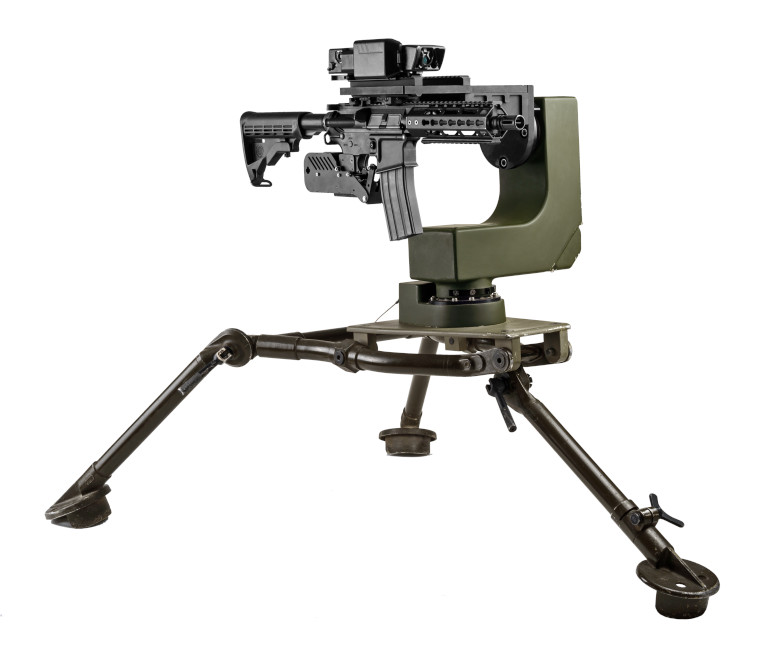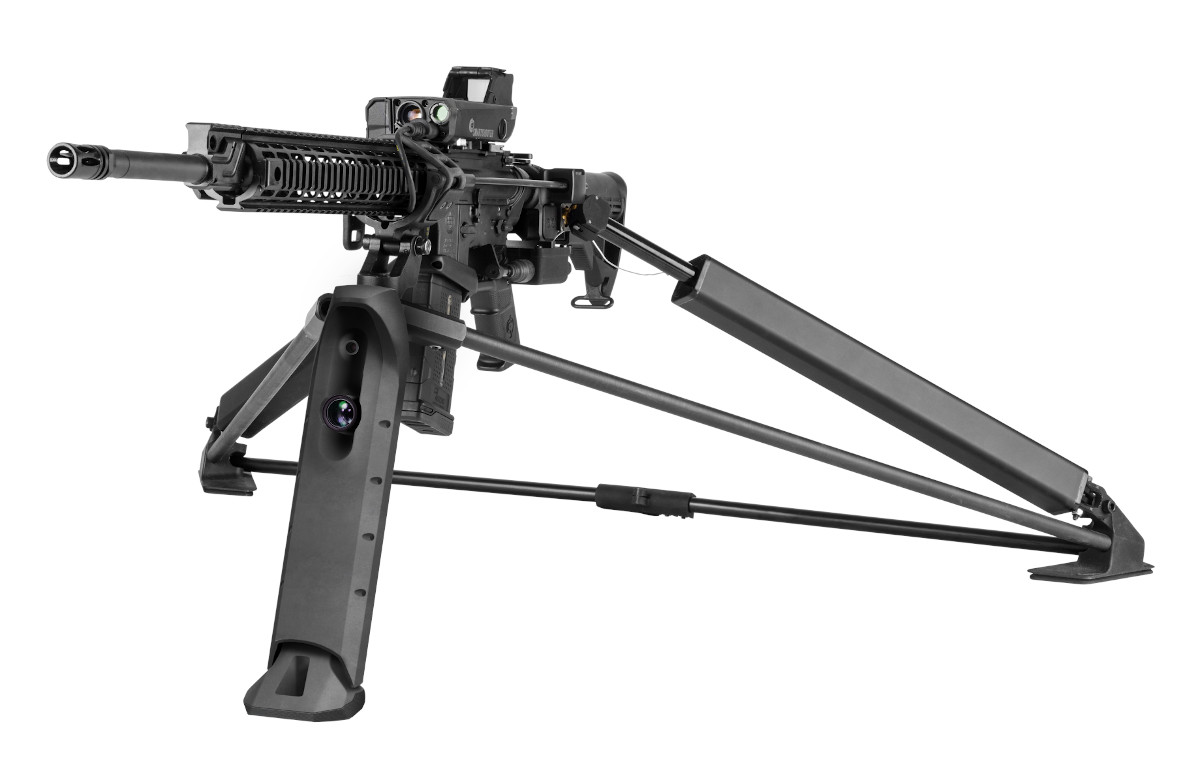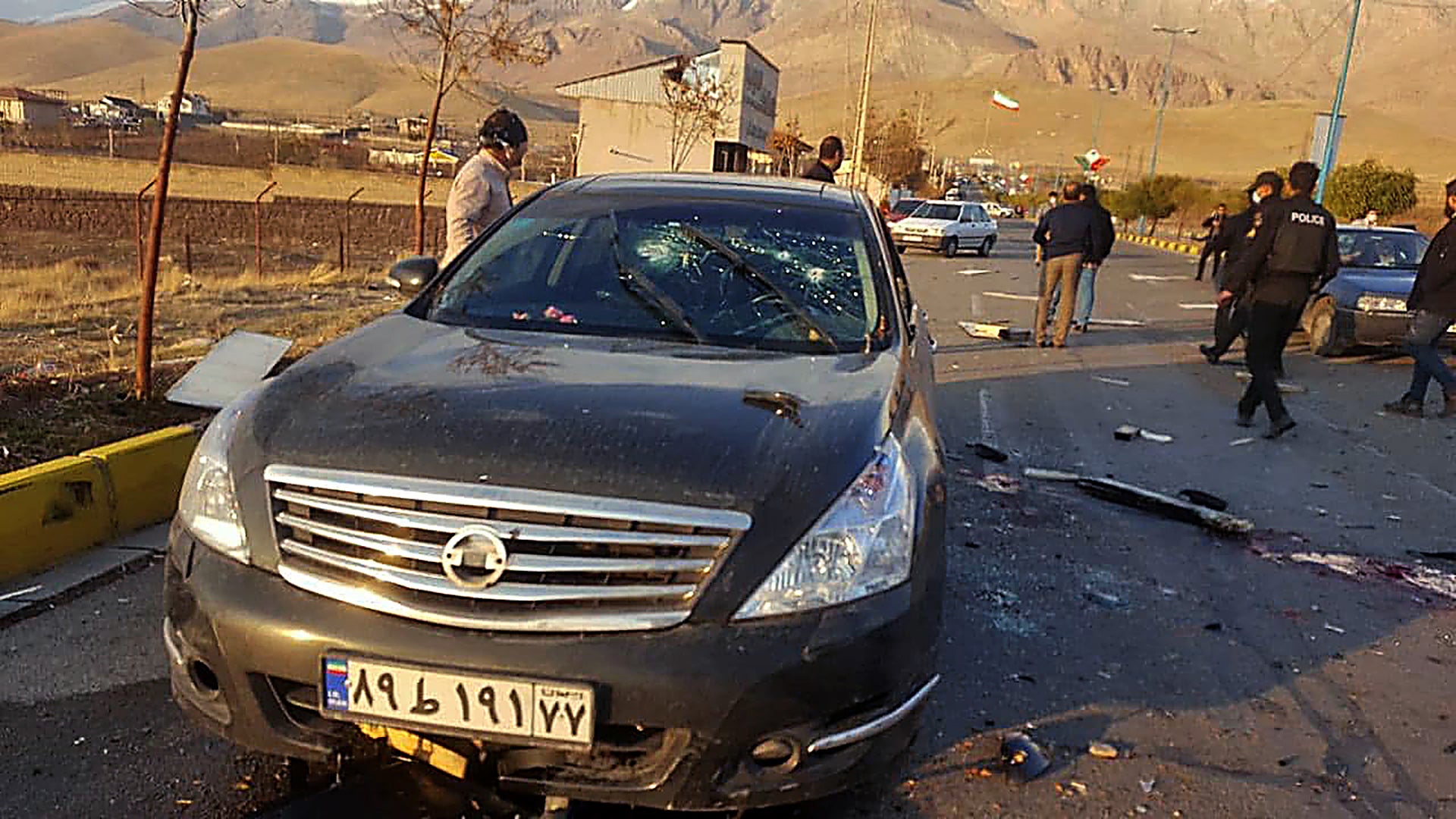A senior Iranian official has now claimed that Israel killed top nuclear scientist Mohsen Fakhrizadeh last week using a gun in either a remote-controlled or entirely automated mount on a pickup truck and that no actual human assassins were involved. No hard evidence has been provided to substantiate this assertion, which sounds like it was ripped straight from the 1997 action movie The Jackal, but it’s not entirely implausible. In July, an Israeli company unveiled a man-portable gun turret that it says can scan for and lock on to targets automatically and then be fired by an operator using a wireless, tablet-like device.
Ali Shamkhani, a General in Iran’s powerful Islamic Revolutionary Guard Corps (IRGC) who serves as Secretary of Iran’s Supreme National Security Council, made the claim during the funeral procession for Fakhrizadeh earlier today. Iran’s semi-official Fars news agency, which has ties to the IRGC, appears to have first reported these details about the purported remote assassination yesterday. The attack that killed the Iranian nuclear scientist, himself an IRGC officer and who U.S. and Israeli intelligence have assessed to have been in charge of Iranian nuclear weapons development efforts for decades, took place in the city of Absard, less than 50 miles east of the Iranian capital Tehran, on Nov. 27. You can read more about what was known at that time in The War Zone‘s initial reporting on this incident.
“The enemy used a completely new method, style, and professional and specialized way to succeed in reaching its goal,” Shamkhani subsequently declared at Fakhrizadeh’s funeral.

Per Shamkhani’s remarks and Fars’ report from Sunday, as well as other news stories from Iranian outlets, Fakhrizadeh was headed with his wife for a weekend in Absard at the time of the attack. The black Nissan sedan they were driving in was part of a four-vehicle convoy.
Shortly after the convoy made a turn, an electronically-controlled gun turret located inside a parked blue Nissan pickup truck shot at the sedan carrying Fakhrizadeh. The car came to a stop and the scientist is said to have gotten out, apparently unaware that the sounds he heard of objects hitting the vehicle were actually gunfire.
The gun then continued to fire, with bullets hitting Fakhrizadeh in the side and back, including at least one that left his spine severed, according to Fars. A bodyguard, who may have also been in the car, tried to save him by jumping on top of him and was also wounded, per the report. The pickup truck then exploded.
It’s unclear how many other casualties there may have been in total. Fakhrizadeh was reportedly rushed to a local medical clinic before being flown by helicopter to a military hospital in Tehran, where he succumbed to his wounds. Other reports have asserted that the gun turret was “controlled by satellite” and that the weapon was recovered and had “the logo and specifications of the Israeli military industry.” No pictures have been released, so far, claiming to show any remains of the gun or its automated mount.
What is absolutely important to note here is this version of events almost entirely contradicts
Fars’ own initial reporting of the incident, which said that the explosion had occurred first and that a team of gunmen had then killed Fakhrizadeh. This scenario seemed to suggest a complex attack in which the explosive-laden truck was used to first bring the convoy to a halt.
That report also claimed that three to four people had died at the scene, including all of the attackers. Other Iranian media reports later said that a dozen gunmen had been involved in the assassination and that a 50-person support team had also been in the country to help carry out the attack. Previous assassinations, including of other Iranian nuclear scientists, attributed to Israel have involved a mixture of bombs mounted on cars and other vehicles, as well as gunmen on motorcycles.
The gun turret story feels better suited to a Hollywood blockbuster. It is perhaps most reminiscent of 1997’s The Jackal, in which the titular hitman, played by Bruce Willis, attempts to assassinate the First Lady of the United States using a remote-controlled heavy machine gun concealed inside a minivan.


At the same time, as already noted, in July, Israeli company Smart Shooter debuted the newest addition to its SMASH product family, the SMASH Hopper, also known as the Light Remote-Controlled Weapon Station (LRCWS). This system combines a gun equipped with the SMASH 2000 computerized gunsight and a remotely operated mount that the company says can be installed on a tripod or a pedestal mount on the ground or on a vehicle. You can read more about this system in this past War Zone piece all about it.

The SMASH 2000 gunsight, which doesn’t require an automated gunmount, already has the ability to automatically detect targets and lock on to them, only allowing the operator to fire when they are most likely to score a hit. You can read more about this sight in this previous War Zone story.

SMASH Hopper builds on the inherent capabilities of the SMASH 2000, giving an operator the ability to set the turret to automatically scan and then lock on to targets and then giving the command to fire. The user can also manually operate the turret, if desired. All of this can be done using a tablet-type device either physically connected to the turret via a wire or through a wireless connection.
An even lighter weight remotely-operated system, SMASH Hopper Light, is also available with many of the same capabilities. It uses a special, proprietary tripod and has a more limited field of fire than the standard SMASH Hopper when deployed, but it can be carried and emplaced by a single person.

Smart Shooter’s promotional images show SMASH Hopper and SMASH Hopper Light fitted with 5.56mm AR-15/M16 pattern carbines. Its product material says that the full-size system, at least, can also accommodate 7.62mm caliber weapons based on the Stoner SR-25 pattern rifle.
As such, it’s certainly possible that the hit team could have set up a remotely-operated turret, such as SMASH Hopper, in the Nissan pickup and operated it remotely from somewhere nearby, or even set it to function in a semi-autonomous fire mode, although that seems less likely. Of course, it’s equally possible, if not far more plausible, that Iran, embarrassed that a top nuclear scientist was killed in broad daylight in the middle of the country, is effectively asserting that the assassination succeeded only because its enemies employed “a completely new method” as Shamkhani put it.
It’s also possible that both scenarios are partially true. That this new technology was leveraged as part of the hit, but that actual hitman also took part in making sure Iran’s prized scientist didn’t live to see another day. Often times, some sort of diversion can be beneficial in these types of attacks. Having a vehicle ahead open fire with a remote gun turret would certainly qualify for such a diversion.
All this being said, the Iranian government has yet to provide any hard evidence to support any of the reported chains of events that led to Fakhrizadeh’s death, whether the attack involved some kind of remote-controlled turret or not. It remains to be seen whether or not any such additional information, including supposed pictures of any weapons used in the attack, will emerge given the broad consensus, inside Iran and elsewhere, that Israel was responsible, regardless of the method.
It’s still important to note that the idea that Fakhrizadeh was killed in a remote-controlled ambush of some kind is not entirely out of the realm of possibility. Precisely this type of capability does exist, and not in a big heavy form, and it is indeed manufactured in Israel. This could be all the more reason for Iranian officials to point to this technology as the culprit of the assassination, regardless of any proof it was actually present or not.
Contact the author: joe@thedrive.com
